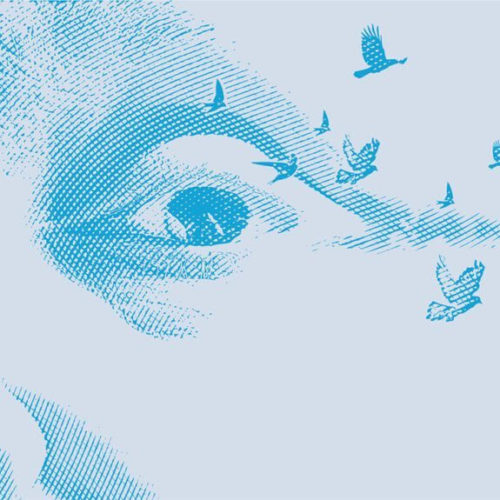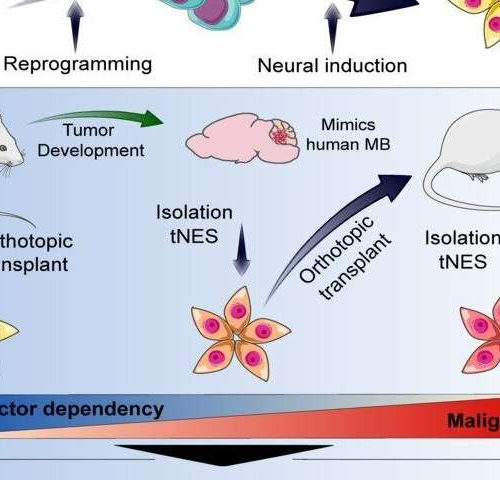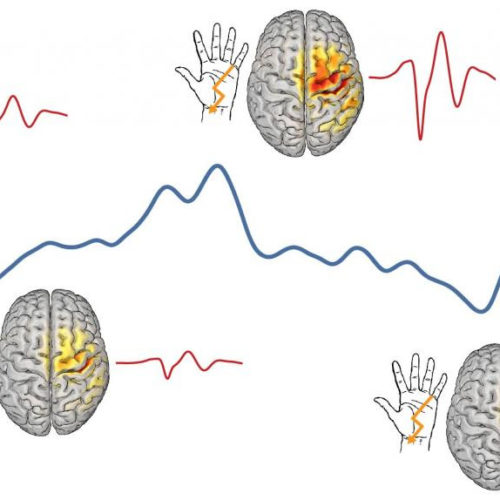Hallucinations are sensory perceptions that appear in the absence of stimuli. Although they are often associated with illnesses such as schizophrenia, these phenomena can occur in the absence of mental ill health. But what explains these uncanny occurrences? Not all hallucinations occur due to psychotic disorders or psychedelic drugs. There are many types of hallucinations....
Tag: <span>neuroscience</span>
UCI researchers publish new guide for viral tracers in neural circuit mapping
Center for Neural Circuit Mapping established to disseminate molecular tools to the worldwide neuroscience community UNIVERSITY OF CALIFORNIA – IRVINE XU ET AL. REVIEW AND EVALUATE GENETICALLY MODIFIED VIRUSES DEVELOPED FOR NEURAL CIRCUIT MAPPING, INCLUDING HERPESVIRUS, RABIES VIRUS, ADENOVIRUSES, LENTIVIRUSES, AND ADENO-ASSOCIATED VIRUSES.view more CREDIT: UCI SCHOOL OF MEDICINE Irvine, CA – August 4, 2020...
New stem cell model to study how cancer arises
by Tabea Kemna, Karolinska Institutet In an interdisciplinary study combining stem cell biology and tumor biology, researchers from Karolinska Institutet (as well as Uppsala and Lund University, together with researchers in Canada, Germany and France), have succeeded in creating a new type of stem cell model for studies on cancer of the brain. The study...
Transcranial stimulation to prevent fear memories from returning
by University of Bologna research group from the University of Bologna has succeeded in modifying the negative effect of a returning memory that triggers fear, and developed a new non-invasive experimental protocol. The result of this study, published in the journal Current Biology, is an innovative protocol that combines fear conditioning—a stimulus associated with something...
Different from a computer: Why the brain never processes the same input in the same way
MAX PLANCK INSTITUTE FOR HUMAN COGNITIVE AND BRAIN SCIENCES HOW STRONGLY THE CORTEX IS EXCITABLE BY A STIMULUS (LIGHTNING SYMBOL) IS NOT LEFT TO CHANCE. RATHER, THE CHANGE BETWEEN LOWER AND STRONGER EXCITABILITY FOLLOWS A CERTAIN TEMPORAL PATTERN (VIOLET… view more CREDIT: STEPHANI/ MPI CBS Rustling leaves, light rain at the window, a quietly ticking...
Calcium channel subunits play a major role in autistic disorders
by Universitaet Mainz After 21 days in vitro, hippocampal neurons of the rat form many synaptic contacts and communicate with each other. Within the study such neuronal networks cultivated on multi-electrode arrays were used to invest the synaptogenic function of α2δ-subunits. Credit: ill. by Artur Bikbaev The ability of the human brain to process and...
Study helps to settle debate on roles of REM and non-REM sleep in visual learning
by Kerry Benson, Brown University This is a screenshot of a polysomnographic record (30 seconds) representing Rapid Eye Movement Sleep. EEG highlighted by red box. Eye movements highlighted by red line. Credit: MrSandman/ Wikipedia Which sleep stage is most important for learning: REM or non-REM? Does sleep improve learning by enhancing skills while people snooze,...
Study uncovers hair cell loss as underlying cause of age-related hearing loss
by Massachusetts Eye and Ear Infirmary In a new study of human ear tissues, hearing scientists have demonstrated that age-related hearing loss, also called presbycusis, is mainly caused by damage to hair cells, the sensory cells in the inner ear that transform sound-induced vibrations into the electrical signals that are relayed to the brain by...
Synapse-saving proteins discovered, opening possibilities in Alzheimer’s, schizophrenia
UNIVERSITY OF TEXAS HEALTH SCIENCE CENTER AT SAN ANTONIO GEK-MING SIA, PHD, AND COLLEAGUES IN THE LONG SCHOOL OF MEDICINE AT UT HEALTH SAN ANTONIO DISCOVERED A NEW CLASS OF PROTEINS THAT SPARE SYNAPSES FROM ELIMINATION. INCREASING THE NUMBERS… view more CREDIT: UT HEALTH SAN ANTONIO Researchers at The University of Texas Health Science Center...
Breakthrough image shows how “super-ager” brains resist cognitive decline
By Rich Haridy July 15, 2020 New research is illustrating the differences in toxic protein accumulations in the brains of older subjects suffering cognitive decline compared to older subjects with unexpectedly strong cognitive abilities. An image compiled from PET scans of these so-called “super-agers” has won Image of the Year from the Society of Nuclear...









